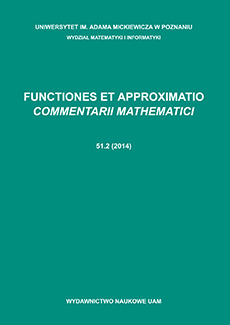Abstract
Let $K=\mathbb{Q}(\theta)$ be a number field generated by a complex root $\theta$ of a monic irreducible trinomial $F(x) = x^n+ax+b \in \mathbb{Z}[x]$. There is an extensive literature on monogenity of number fields defined by trinomials. For example, Gaál studied the multi-monogenity of sextic number fields defined by trinomials. Jhorar and Khanduja provide some explicit conditions on $a$, $b$ and $n$ for $(1, \theta, \ldots, \theta^{n-1})$ to be a power integral basis in $K$. But, if $\theta$ does not generate a power integral basis of $\mathbb{Z}_K$, then Jhorar's and Khanduja's results cannot answer the monogenity of $K$. In this paper, based on Newton polygon techniques, we deal with the problem of non-monogenity of $K$. More precisely, when $\theta$ does not generate a power integral basis of $\mathbb{Z}_K$, we give sufficient conditions on $n$, $a$ and $b$ for $K$ to be not monogenic. For $n\in {5, 6, 3^r, 2^k\cdot 3^r, 2^s\cdot 3^k+1}$, we give explicitly some infinite families of these number fields that are not monogenic. Finally, we illustrate our results by some computational examples.
Citation
Hamid Ben Yakkou. Lhoussain El Fadil. "On monogenity of certain number fields defined by trinomials." Funct. Approx. Comment. Math. 67 (2) 199 - 221, December 2022. https://doi.org/10.7169/facm/1987
Information





